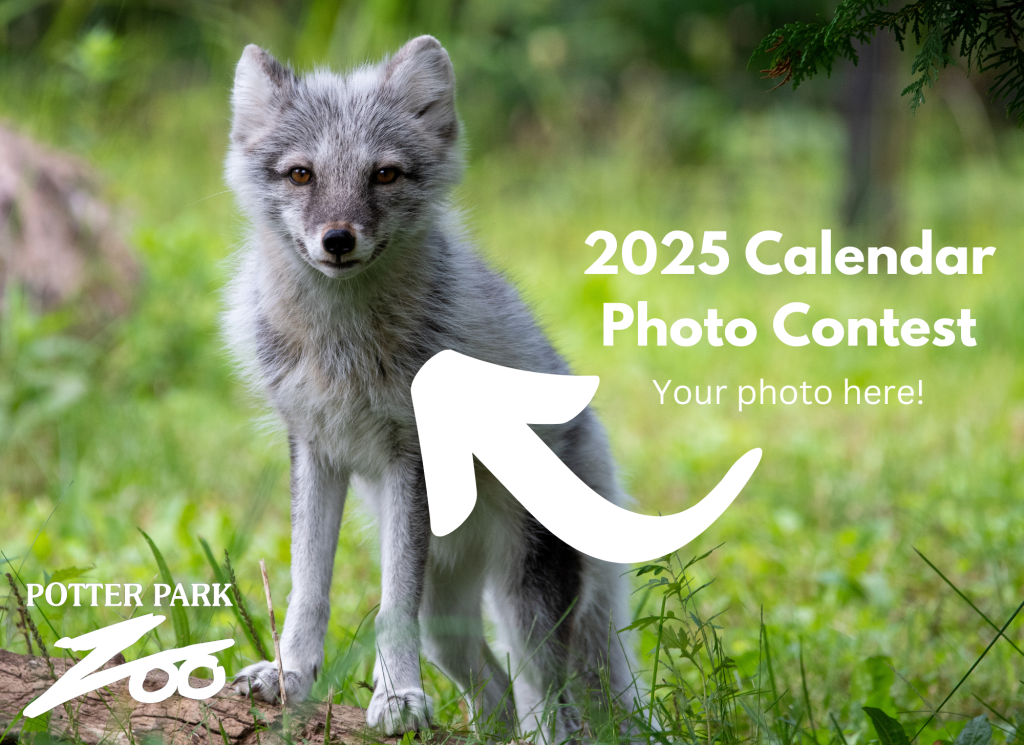Summary of Potter Park Zoo Hosts Photo Contest!:
The Potter Park Zoo is hosting a calendar photo contest and invites both seasoned photographers and passionate hobbyists to participate. This is an opportunity to showcase photography skills and possibly have your work featured in the 2025 Potter Park Zoo calendar.
- Overview of Potter Park Zoo’s Photo Contest
- Importance of Wildlife Photography for Conservation
- Guidelines and Categories for the Contest
- Tips for Capturing Stunning Wildlife Photos
- Recognition and Impact of Featured Photos
Potter Park Zoo Hosts Photo Contest! Calling all photography enthusiasts! We’re excited to announce our calendar photo contest, and we want YOU to be a part of it! Whether you’re a seasoned photographer or a passionate hobbyist, this is your chance to showcase your skills and have your work featured in our 2025 Potter Park Zoo calendar.
Overview of Potter Park Zoo’s Photo Contest
Potter Park Zoo, located in Lansing, Michigan, has been a haven for wildlife enthusiasts since its establishment in 1920. This year, the zoo is organizing a photo contest to engage visitors and celebrate the diversity of its inhabitants. The contest aims to not only highlight the beauty of the animals but also raise awareness about wildlife conservation issues. Participants have the chance to capture the zoo’s residents in their naturalistic habitats and contribute to a meaningful cause by promoting wildlife through their art.
Photography contests like this play a significant role in connecting the public with wildlife. By appealing to the photographers’ creativity and skills, the zoo hopes to bring attention to important conservation messages and the necessity of preserving biodiversity. Engaging with the community through activities like this ensures that the mission of wildlife conservation remains at the forefront of public consciousness.
Importance of Wildlife Photography for Conservation
Wildlife photography is more than just a visual art form; it is an essential tool for conservation. Photographs help document species, their behaviors, and habitats, providing valuable data for research and conservation efforts. Images of endangered species can evoke emotional responses and motivate people to support conservation programs.
Photographers can capture moments that highlight the challenges faced by wildlife, such as habitat loss, poaching, or climate change impacts. These images can be powerful advocacy tools, raising public awareness and influencing policy changes. The impact of a well-timed photograph in stirring public sentiment cannot be overstated, as it often bridges the gap between scientific research and public engagement.
Guidelines and Categories for the Contest
To participate in Potter Park Zoo’s photo contest, entrants are required to follow specific guidelines. These ensure that the contest is fair and all submissions meet a standard that benefits the contest and conservation objectives. Participants are expected to submit their best high-resolution images captured at Potter Park Zoo. The contest is open to all age groups and skill levels, making it inclusive.
Categories include, but are not limited to:
- Mammals: Capturing the majesty of lions, tigers, and other mammals.
- Birds: Highlighting the beauty and grace of the zoo’s avian residents.
- Reptiles and Amphibians: Focusing on the often-overlooked reptiles and amphibians.
- Insects: Showcasing the intricate details of various insects.
Photos are judged based on criteria such as composition, originality, and adherence to the theme. The goal is to highlight the unique characteristics of the zoo’s inhabitants while promoting the zoo’s mission of wildlife conservation and education. Winning entries will be featured in the 2025 Potter Park Zoo calendar, providing significant exposure and recognition for the photographers.
Tips for Capturing Stunning Wildlife Photos
Successfully photographing wildlife requires a mix of patience, skill, and knowledge about animal behavior. Here are some essential tips for those looking to participate in the photo contest:
-
Know Your Subject: Understanding the habits and routines of the animals you are photographing increases your chances of capturing unique behaviors. Research the species and observe them for a while before taking your shot.
-
Use Appropriate Equipment: A good camera with a fast shutter speed and a quality zoom lens can make a significant difference. For wildlife photography, stabilization equipment like tripods can also be beneficial.
-
Focus on the Eyes: The eyes are the most expressive part of an animal. Ensuring that the eyes are in sharp focus can add life and intensity to your photographs.
-
Shoot in Natural Light: Utilize natural lighting conditions to your advantage. Early morning and late afternoon provide the best light for wildlife photography.
- Patience and Stealth: Animals can be unpredictable. Patience and a quiet presence are crucial. Sometimes waiting for the perfect moment can result in the most spectacular shot.
Recognition and Impact of Featured Photos
Photos chosen for the 2025 Potter Park Zoo calendar will receive significant recognition. This inclusion is not only a testament to the photographers’ skills but also an acknowledgment of their contribution to raising awareness about wildlife conservation. The calendar is widely distributed, providing exposure to the winning photographers and their work.
Featuring such photos in the calendar helps promote the zoo’s conservation efforts. It engages the community, encouraging them to support the zoo’s mission and educational programs. Showcasing these images can inspire visitors to learn more about the species and the challenges they face in the wild.
Photographers can play a pivotal role in this endeavor. Their work captures the essence of the animals, illustrating the importance of protecting these species for future generations. Every photograph tells a story and serves as a reminder of the impact humans have on the planet’s biodiversity.
The Potter Park Zoo photo contest is an excellent opportunity for photographers to showcase their talent while supporting a noble cause. By participating, they contribute to the ongoing efforts to conserve wildlife and educate the public on the importance of biodiversity. The images taken at the zoo will not only create lasting memories but also inspire collective action towards preserving the natural world.


